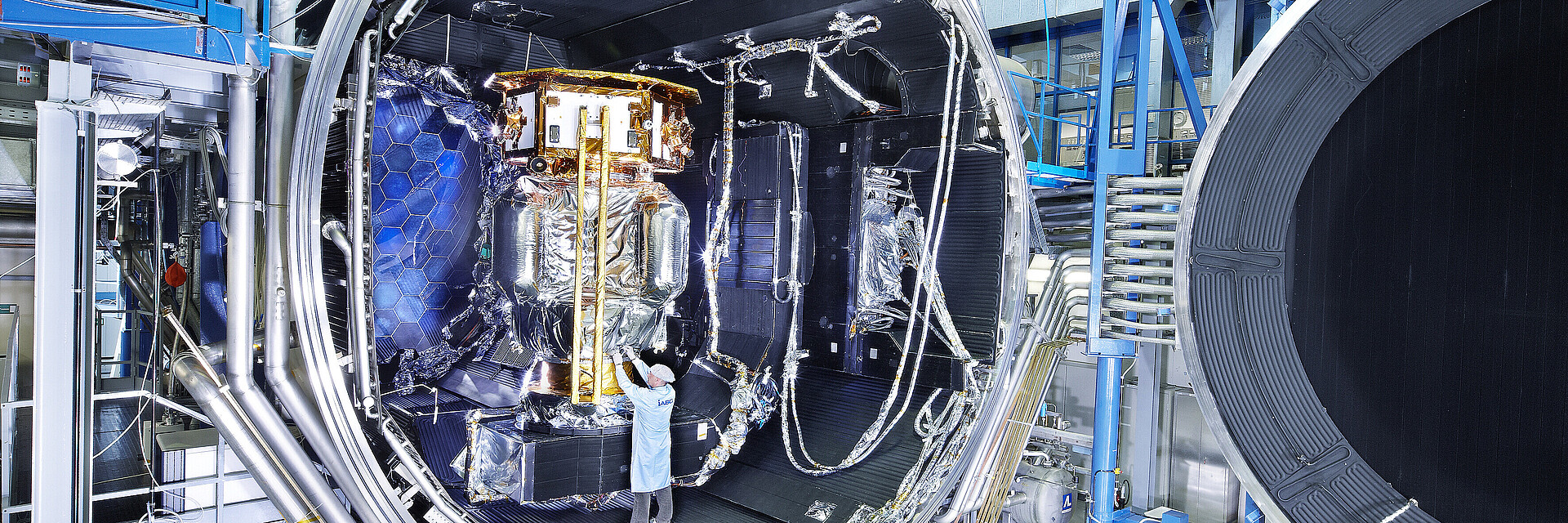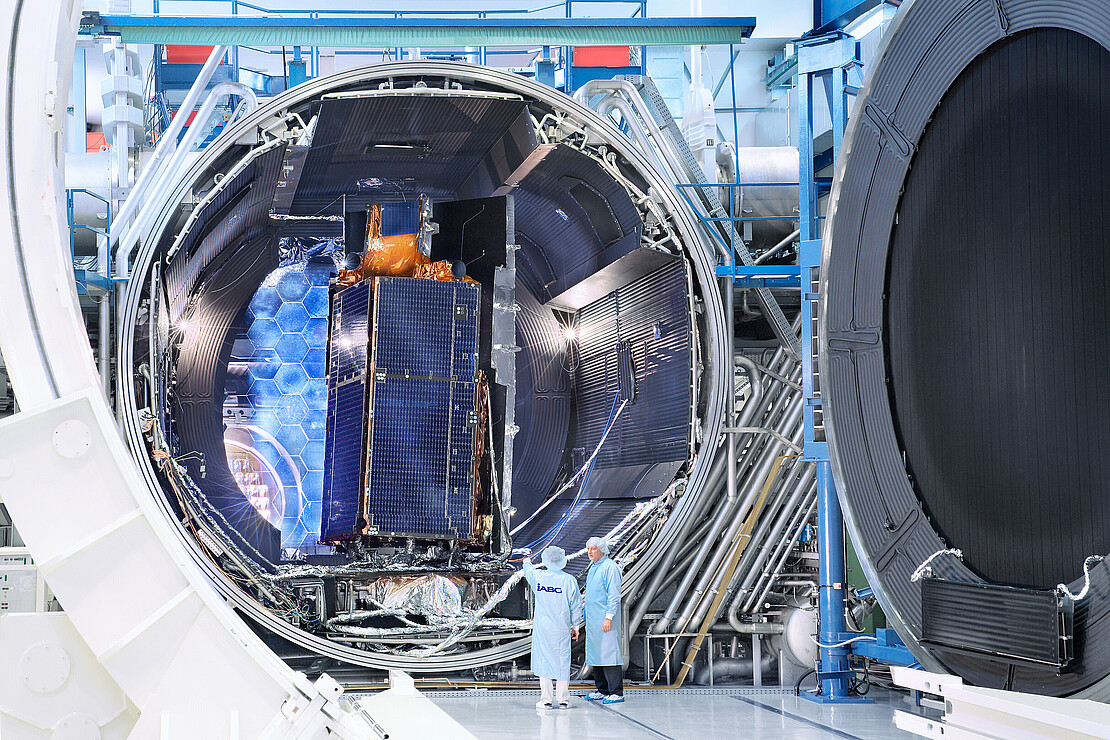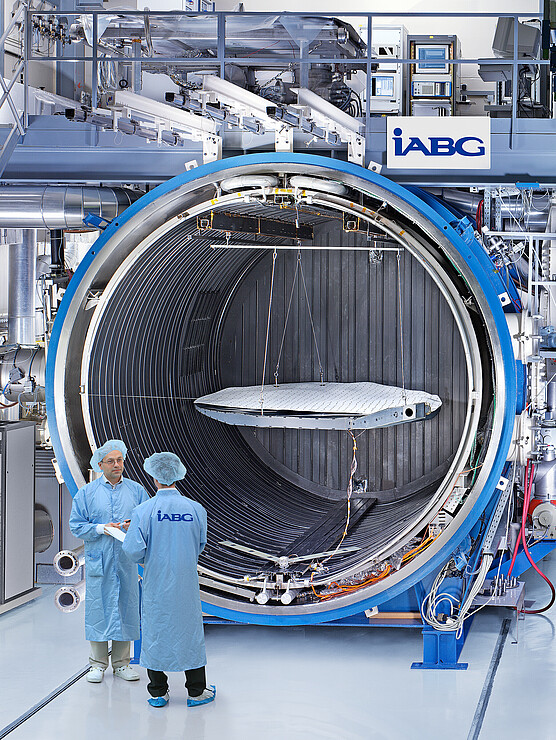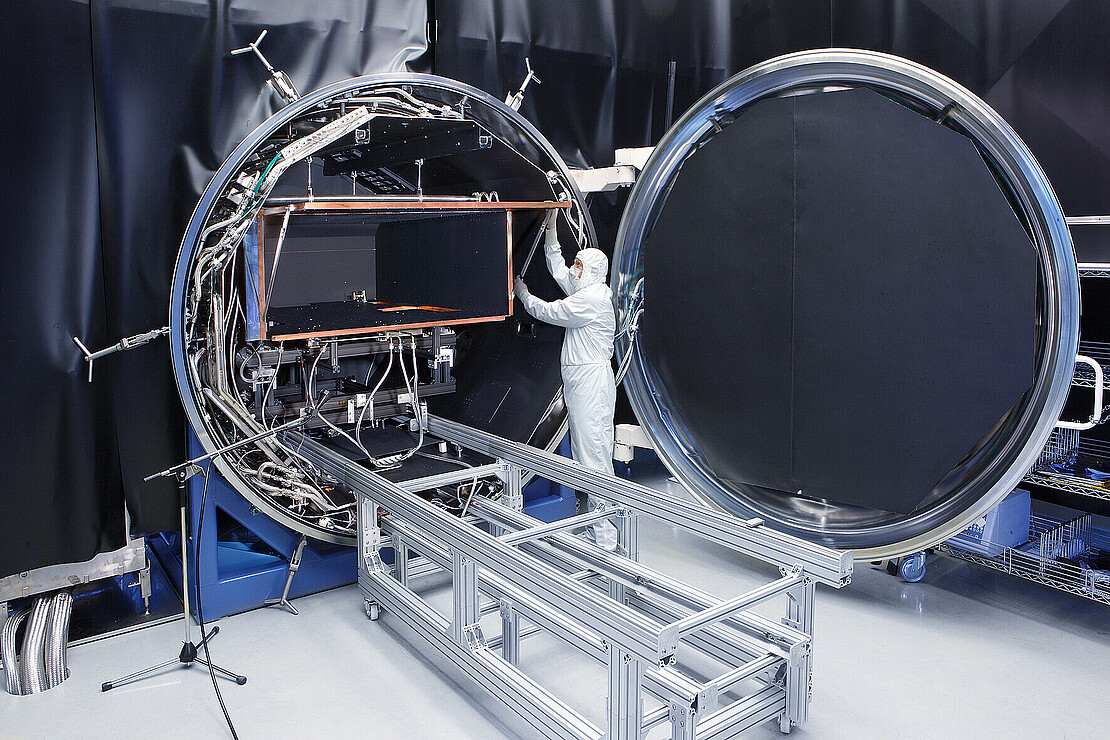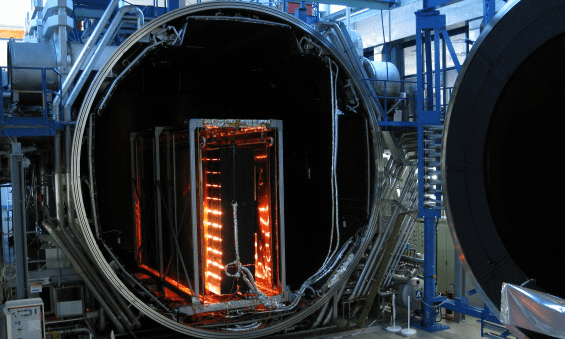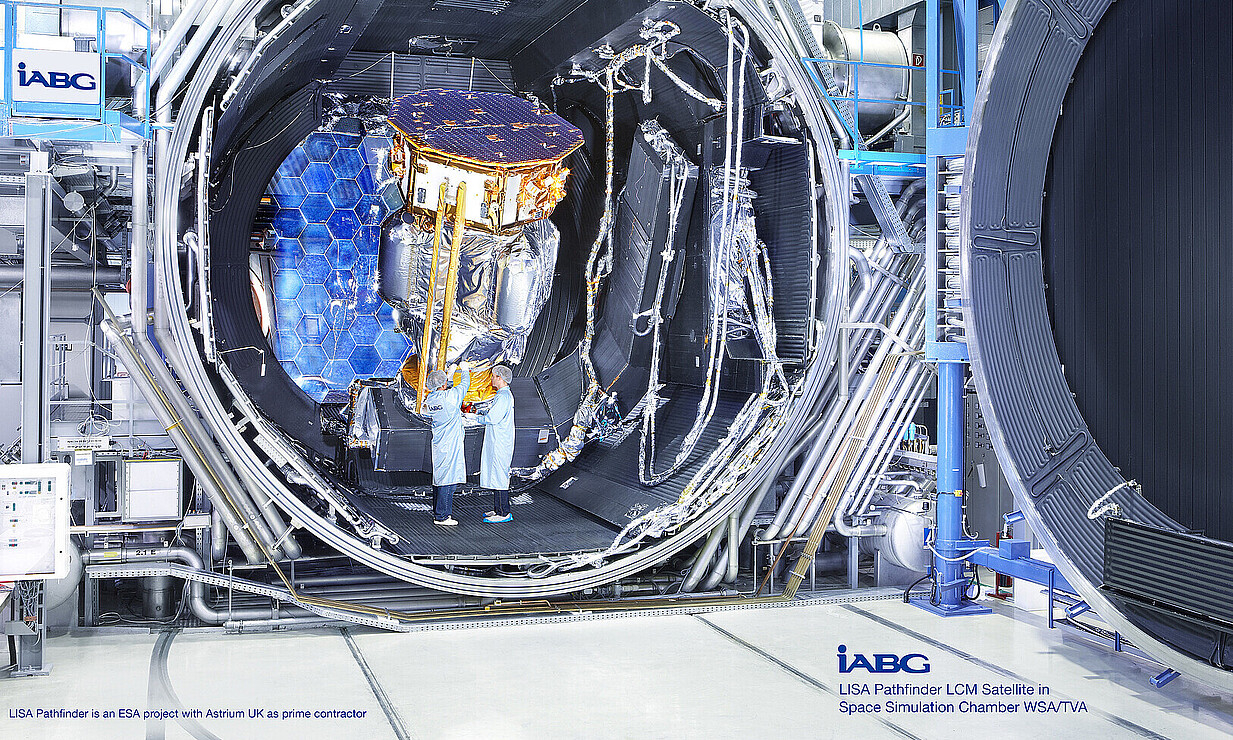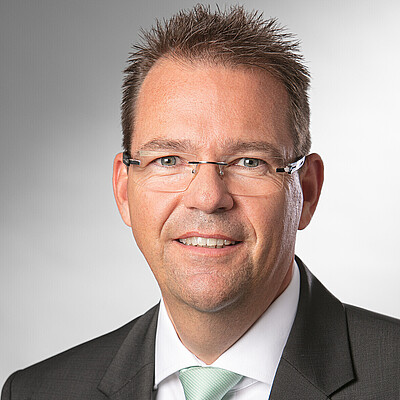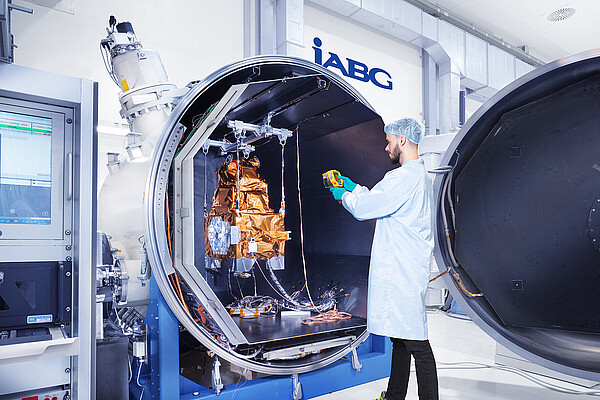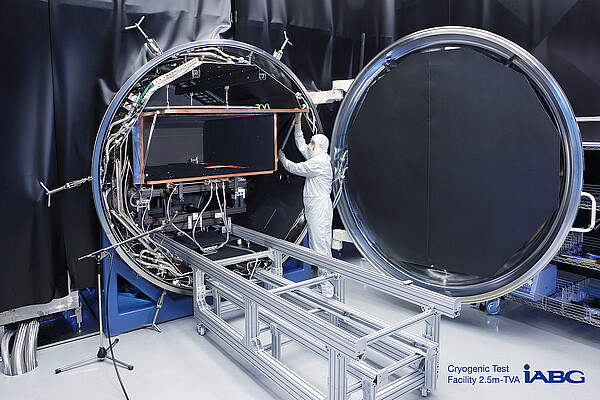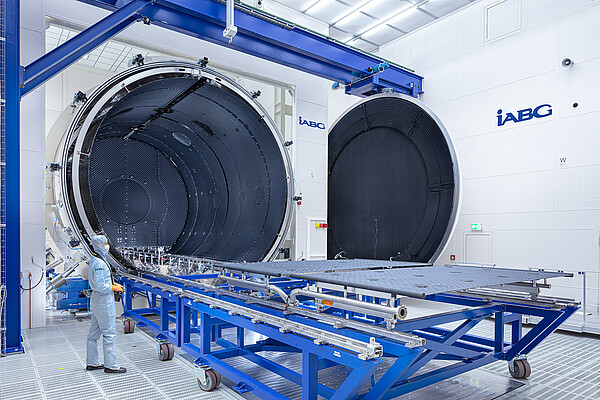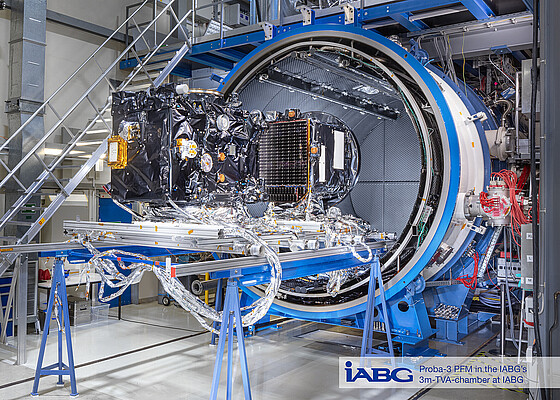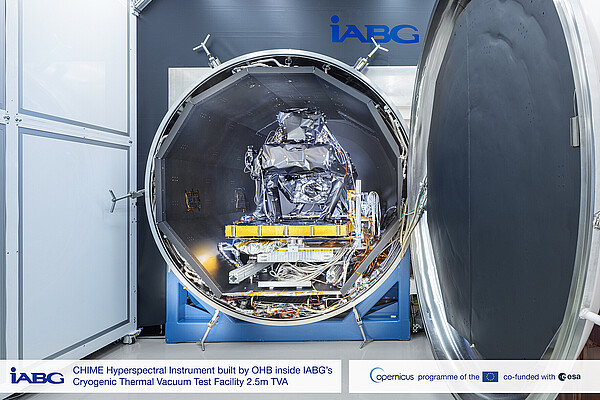Thermal Vacuum Chambers
Performance Spectrum of Our Thermal Vacuum Chambers
(WSA, 5 m TVA, 3 m TVA, 2.5 m HeTVA, 2 m TVA)
- Simulation of space conditions: High vacuum, low background temperature (LN2)
- Clean room standards ISO 8 and ISO 5 (5m TVA & 2.5m HeTVA)
- Artificial solar radiation generation with xenon lamps (WSA)
- Free movement of the test object relative to the solar radiation using a motion simulator (WSA)
- Micro-vibration decoupling (5m TVA)
- High-temperature (up to 700 K) and low-temperature (down to 10 K) simulations in 2.5m HeTVA
- Customized solutions and services available upon request
- Chamber diameters from approx. 2 m to over 6 m, chamber lengths from approx. 2 m to 14 m.
